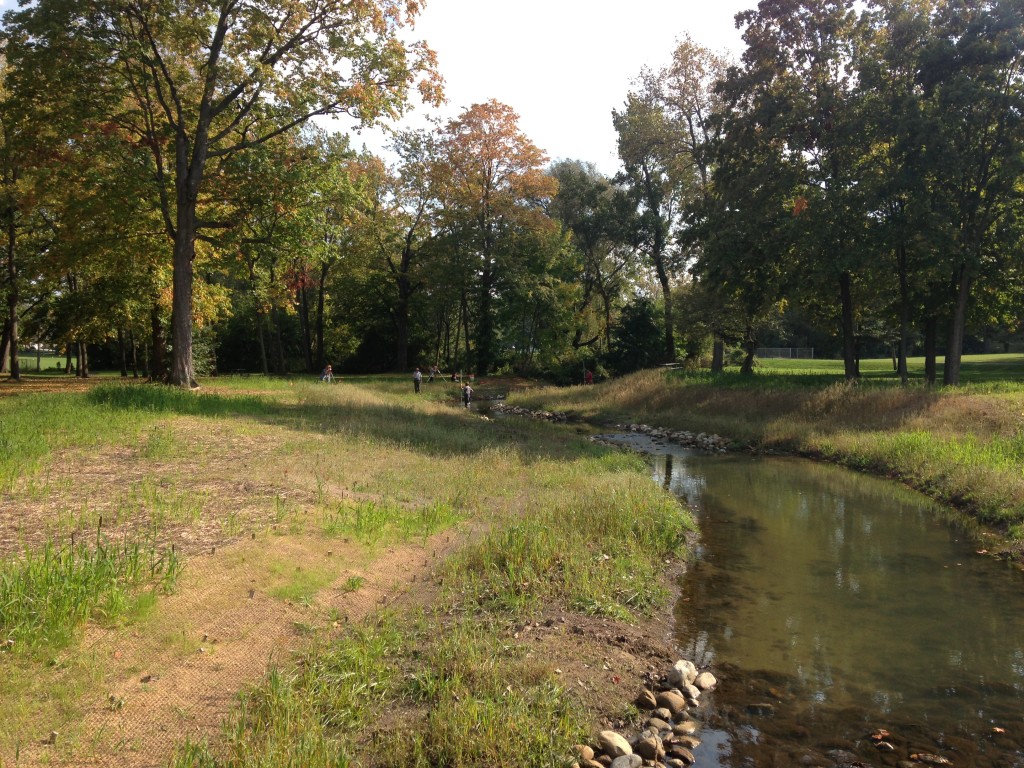AGU Abstract: Dynamic Hydraulic Conductivity, Streambed Sediment, and Biogeochemistry Following Stream Restoration
The Watershed Hydrology Lab will be represented at the AGU Fall Meeting in December in the session on “Groundwater-Surface Water Interactions: Identifying and Integrating Physical, Biological, and Chemical Processes.”
Dynamic Hydraulic Conductivity, Streambed Sediment, and Biogeochemistry Following Stream Restoration
Anne Jefferson, Stuart Baker, and Lauren Kinsman-Costello, Kent State University, Kent, OH, United States
Stream restoration projects strive to improve water quality and degraded habitat, yet restoration projects often fall short of achieving their goals. Hyporheic exchange facilitates biogeochemical interaction which can contribute to positive water quality and habitat, but there are limited data on how restoration affects hyporheic processes. Hyporheic flowpaths can be altered by the processes and products of stream restoration, as well as the transport of fine sediment through the stream bed post-restoration. In two northeastern Ohio headwater streams, variations in hydraulic conductivity and pore water chemistry were monitored following restoration, as measures of hyporheic functioning. A second-order stream restored in August 2013, had a slight decrease in average hydraulic conductivity but an increase in heterogeneity from pre-restoration to four months post-restoration. Data collected 10 and 15 months post-restoration show continued declines in hydraulic conductivity throughout large constructed riffles. These piezometers also indicate dominance of downwelling throughout the riffles with only isolated upwelling locations. Grain size analysis of freeze cores collected in streambed sediments show differences suggesting fluvial transport and sorting have occurred since construction was completed. Pore water sampled from piezometers within the riffles had Mn2+ concentrations ten times higher than surface water, suggesting redox transformations are occurring along hyporheic flowpaths. A first-order stream reach, immediately downstream of a dam, restored in April 2014 had no significant change in average hydraulic conductivity between 1 and 2 months post-restoration, but many individual piezometers had increases of over 100% in high gradient positions or decreases of over 50% in low gradient positions. Changes in hydraulic conductivities in both restored streams are thought to be an adjustments from disturbance to a new dynamic equilibrium influenced by the morphology and sediment regime established by restoration, suggesting these are important processes to consider in the design of such projects.

